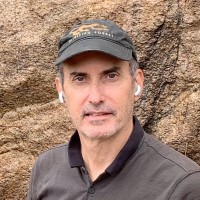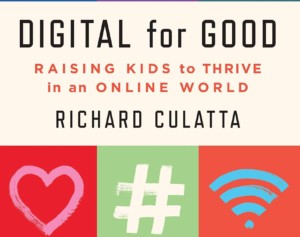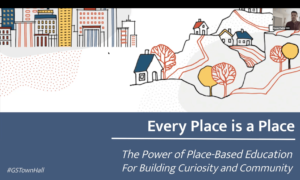A Place for the Humanities in the Digital Age

In the 1950s, C. P. Snow famously argued that academia had separated into two cultures — the sciences and the humanities — with no commerce between them. As both a novelist and a scientist himself, Snow shuttled between the two worlds, and lamented that they did not combine forces to solve problems neither was equipped to address on its own.
In our time, a separation between the sciences and the humanities is asserted on practical grounds: economic life is dominated by technology, which requires science, engineering, and math, not literature, history, philosophy and the like. College is expensive and the global marketplace competitive. Any individual looking for a serious career — and any country hoping to compete in the world economy — had best forget about the humanities and focus instead on things more practical.
STEM-promoting programs have proliferated throughout education, while the humanities have, in places, become expendable. States across the country offer incentives for students getting degrees in fields such as electrical engineering, while in Kentucky, for example, the governor has gone so far as to propose withholding state funds from schools that produce too many graduates in French literature.
All of this bias in favor of STEM has begun to generate some pushback from people who feel that there is a valuable, even necessary, place for the humanities in today’s world. Some caution against reducing education to career training alone. We should be unwilling, the novelist Marilynne Robinson writes, to “cede… humane freedom to a very uncertain promise of employability.” Rather, she says, we need the humanities for “preparing capable citizens, imaginative and innovative contributors to a full and generous, and largely unmonetizable, national life.”
Others make the case that training in the humanities actually does pay off in the economic lives of both workers and nation. George Anders, in You Can Do Anything, reports that many well-paying jobs in today’s economy are tailor-made for liberal arts majors — for example, jobs in project management, digital marketing, graphic design and genetic counseling. Randall Stross’s A Practical Education: Why Liberal Arts Majors Make Great Employees makes the case that the humanities provide the most useful training for an unknowable future. Joseph E. Aoun, president of Northeastern University, argues in Robot-Proof: Higher Education in the Age of Artificial Intelligence that the humanities will be key to keeping life humane in an increasingly automated future.
In contrast to the 1950s, any rift between technical and humanistic fields today seems to be closing on its own anyway. As new technologies integrate themselves ever more thoroughly into all corners of human life, they increasingly require for their success a deeper attunement to the nature of human beings. In education, the evolution of STEM to STEAM (with the A standing for arts) reflects this integration, as does the current interest in design thinking — a recognition that technical things and systems must be responsive to aesthetics, personal preferences, cultural differences, and human behaviors of all sorts.
The digital humanities likewise blend the two cultures into one, applying methods of quantification and data analysis to the study of literature, geography, history, and other fields. As such, the digital humanities provide an excellent avenue for teaching students technical skills and humanistic modes of inquiry in complementary fashion, perhaps just the way they’ll be asked to use them in their professional and civic lives down the road.
K-12 teachers and students will find online a host of digital humanities resources in three primary areas: human geography, historical archives, and text analysis. Here are some examples:
Human geography
The visualization of digitized geographical information has created a wealth of opportunities for exploring both historical and contemporary relationships between people and place. ORBIS: The Stanford Geospatial Network Model of the Roman World, for example, provides an interactive map that calculates the time and cost of traveling throughout the Roman Empire by land or sea, even taking into account the seasons.
A Vision of Britain Through Time overlays the geography of Britain with election data, census information, historical maps, and travel writing. Select any district and explore changes through time in its population, social structure, housing, industry, economic conditions, and more.
Google Earth’s Voyager section contains ready-made explorations in travel, culture, and history. Tour famous writers’ homes, explore medieval Europe, or discover tribal government success stories. The Lewis and Clark unit, created with PBS Education, combines videos and text with an interactive Google Earth map of the explorers’ journey to the Pacific and back.
Historical archives
Disciplinary boundaries tend to break down in the digital humanities, so geographically centered resources may also be rich troves of archival information. Civil War Washington, for example, combines historical documents, images, data, and maps, with interpretive essays to provide a thick description of the nation’s capital during the Civil War.
The Roy Rosenzweig Center for History and New Media is a repository for a wide mix of projects for studying history, as well as tools for managing citations and organizing and publishing archives. An abundance of teaching resources provide lesson plans organized around rich collections of historical materials. For example, Making the History of 1989 is a project that explores the fall of the communist states in Europe. It includes hundreds of primary sources, along with multi-media interviews with historians.
The Lincoln Telegrams Project is part of “Decoding the Civil War: Engaging the Public with 19th Century Technology and Cryptology through Crowdsourcing,” an effort to transcribe and decode Civil War military telegrams through crowdsourcing. The site includes online access to Lincoln’s wartime telegrams, along with lesson plans for high school students.
American Memory, from the Library of Congress, contains extensive collections of historical materials centered on American life, literature, history, and more. A section for teachers includes classroom materials, professional development resources, and guides for using primary sources.
Text analysis
Sophisticated approaches to text mining are yielding new scholarly insights in fields from literature to linguistics to cultural criticism. For the pre-college classroom, some handy text analysis tools can give students an idea of how digitization opens up modes of inquiry into language and literature.
Google Books Ngram Viewer finds the number of times user-entered words and phrases occur within the vast number of books Google has digitized up to 2008. The Viewer returns a record of the rise or decline of concepts, names, terms, and events appearing in print over years, decades, or centuries.

Wordle and similar programs generate word clouds from user-entered text. Students can analyze famous speeches, for example, by discovering the words used most or least often. Student essays entered into the program can shed light on word usage perhaps not otherwise obvious to writer or instructor. Here’s a list of classroom lessons using word cloud generators.
Voyant moves beyond word clouds to provide context for the words and phrases found in a text. When a word such as “future“ appears in a transcribed conversation, for example, does it carry a positive or negative connotation? This kind of sentiment analysis is more technically challenging to accomplish than simple word clouds, but for the right teacher or student, it can be a useful tool for examining a wide variety of texts.
In our time, technical and humanistic domains tend to meld in ways that C. P. Snow could not have anticipated, but likely would have welcomed. For tomorrow’s students, the very idea that the sciences and humanities could be separated might seem perplexing, as they’ll see all around them technical tools in the service of humanistic inquiry, and human insights shaping the form and application of new technologies.
For more, see:
- Getting Smart on Blending Middle Grade Humanities
- The Purposes of High-Quality PBL
- Want Authentic PBL? Take Students to the Farm
Stay in-the-know with all things EdTech and innovations in learning by signing up to receive the weekly Smart Update.








0 Comments
Leave a Comment
Your email address will not be published. All fields are required.